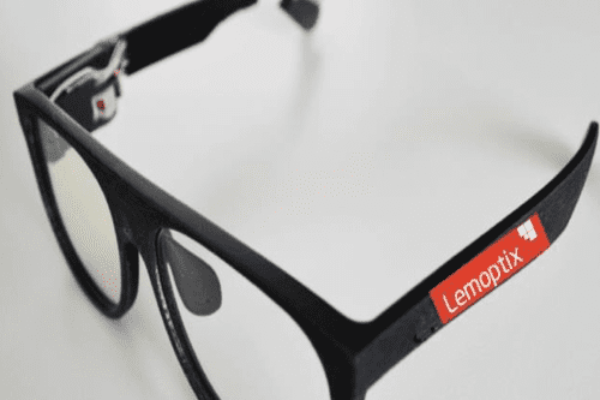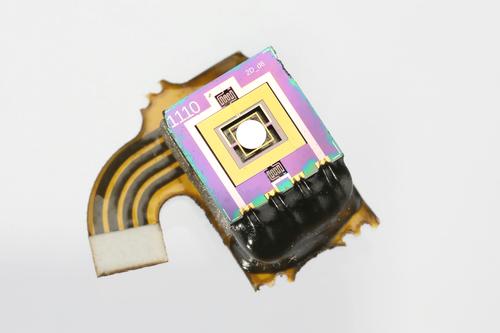
This year the Swiss company won the best paper award at Photonics West. Now pico-projectors for smartphones, heads-up displays for automotive windshields, wearable displays like Google Glass, and 3D scanners can get Lemoptix modules from Hamamatsu Photonics KK, its first licensee.
"Our business model is to license our technology to others," Lemoptix chief technology officer and co-founder Nicolas Abele told us. "Today we have one licensee, Hamamatsu, who has turned our technology into modules for use in a wide range of products."
The oldest pico-projector maker, Texas Instruments’ Digital Light Processor (DLP), uses millions of mirrors — one per pixel — instead of raster scanning red, green, and blue lasers with a single mirror. However, TI does not make the optical engine, which uses LEDs instead of lasers. Rather, it works with about 20 different optical engine makers to achieve compatibility.
The other major pico-projector competitor, Microvision Inc., is like Lemoptix in that it uses lasers and a single raster scanning mirror. However, the Seattle company builds its own modules and even some end-user projectors, rather than licensing its technologies to other manufacturers.
"Microvision is our main competitor, but unlike them, we do not make products," Abele said.
Lemoptix has designed what it calls the world’s smallest optical engine — 25 x 25 x 12 mm — and has worked to "despeckle" displays using proprietary technology. Without despeckling, a laser-driven display looks pixelized — with overly sharp pixels surrounded by obvious circles of black. Lemoptix has not revealed all the details of its despeckling algorithm, but it did reveal enough to win the Photonics West best paper award.
The Lemoptix MEMS micro-mirror scans a display as a projector or scans a 3D object for measurements. Source: Lemoptix)
In addition, Lemoptix has been to solve application problems to make its Hamamatsu modules easier for designers to use. For instance, it has built demonstration applications for heads-up displays on automobile windshields that work even in the brightest ambient light. It has also built 3D scanning solutions using structured light, embedded projectors for smartphones, and wearable displays for augmented-reality smart glasses.

When combined with an optical engine containing red, green, and blue lasers, the Lemoptix MEMS micro-mirror deflects each color to the right pixel on the screen. (Source: Lemoptix)
Lemoptix augmented reality smart glasses were developed in collaboration with the Swiss startup Composyt Light Labs and include a patented holographic combiner that allows images to be projected directly on to the eye’s retina. The glasses themselves, when brought to market, will use retinal projectors so small that they will look like normal eyeglasses, rather than the oddball look of Google Glass.
— R. Colin Johnson, Advanced Technology Editor, EE Times
 If you enjoyed this article, you will like the following ones: don't miss them by subscribing to :
eeNews on Google News
If you enjoyed this article, you will like the following ones: don't miss them by subscribing to :
eeNews on Google News



